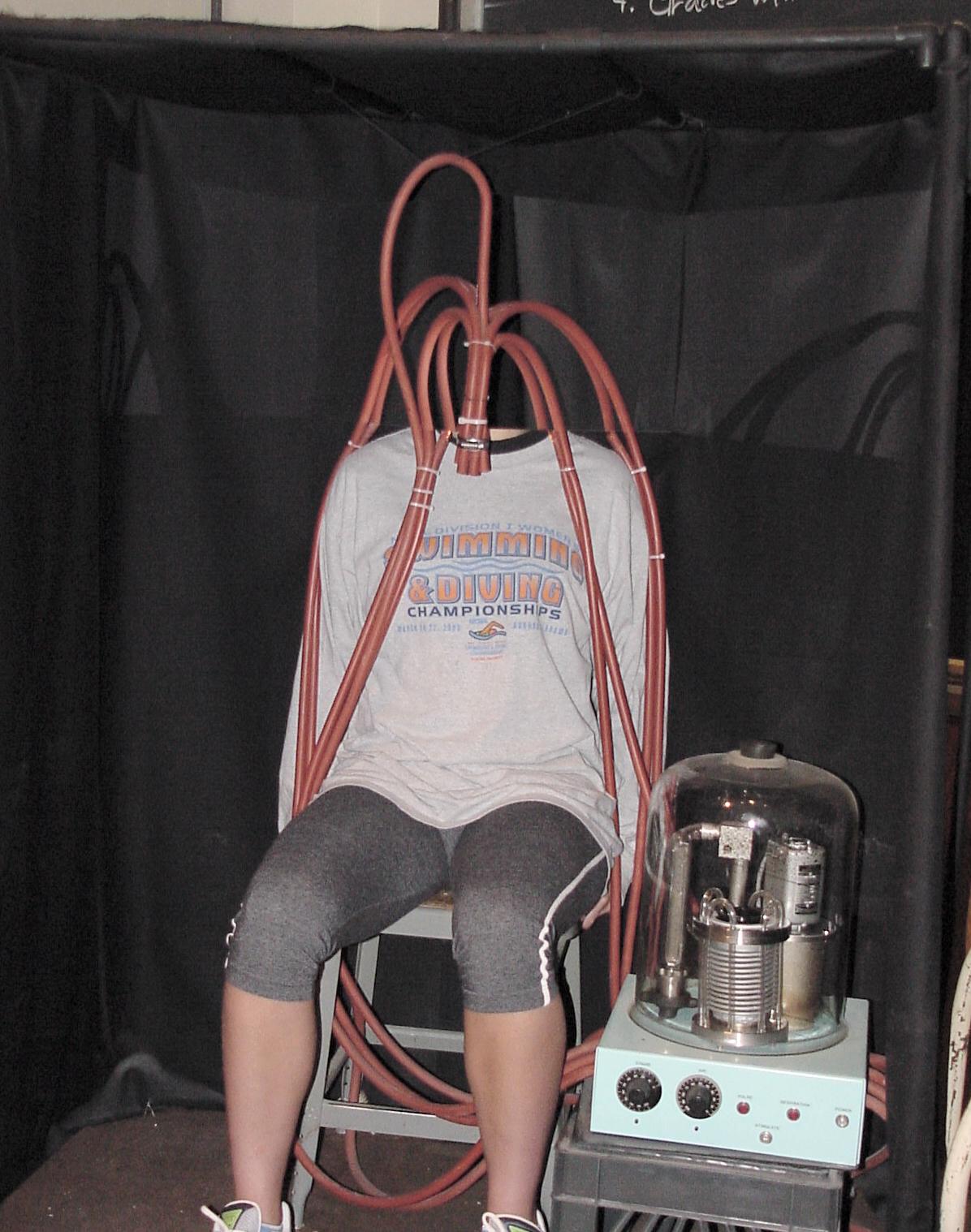




Left: Physics 104 student Beth Lavell models the fashionable 'headless' look during the
last day of summer class. Center: Ivone Kim makes a hot air balloon float.
Right: Justin Moultrie and Stephanie Hernandez discuss the physics of guitars.
Introduction
Physics 104 is based on a similar course
that was developed and taught at the University of Virginia by Louis Bloomfield,
whose book we are using. Much of the material in this course description was
taken (with permission) from the UVA course. There will be some differences
between our course and theirs. We have a much smaller class which allows us to do
things in a more personal manner.
You may have chosen this course as part of your CORE Liberal Arts and Sciences Studies Program, the general education portion of your degree program. CORE Distributive Studies courses are designed to ensure that you will take a look at several different academic disciplines and the way they create and analyze knowledge about the world. A faculty and student committee approved this CORE Distributive Studies course because it will introduce you to ideas and issues that are central to a major intellectual discipline and because it promises to involve you actively in the learning process. Please take advantage of the opportunities this course offers you.
Course Description
The class meets Monday - Friday from 9:30-10:50 am
in room 1410 of the Physics Building. Since the room is typically used for
large classes (and we are a small one!), I will request all students to sit within
the first 2-3 rows of the room. This setting allows us to liberally use one of the world's best Physics lecture demonstration facilities.
Because this class meets for 80 minutes, we have more time in each class to do demonstrations and have discussions. This will be an important part of the course and missing even a single class will put you at a serious disadvantage.
The purpose of this course is to show you the scientific basis of how objects work in the world around you. I have picked a list of topics that hopefully you will find interesting. There will be many opportunities to ask about things that we don't cover both in class and through E-mail.
Grading
The course grade will be determined by the following:
| Homework | 15% |
| Mid-term Exam | 35% |
| Presentation | 15% |
| Final Exam | 35% |
Homework
Homework will be given regularly throughout the
course. It will be collected at the beginning of the class the following Monday and graded. Homework is actually worth more than
the 15% of the grade that it counts for, as it will help you clarify your
understanding of the material, point out areas of weakness and help you prepare
for the exams. Only rarely will a student do well in the course without
carefully doing the homework.